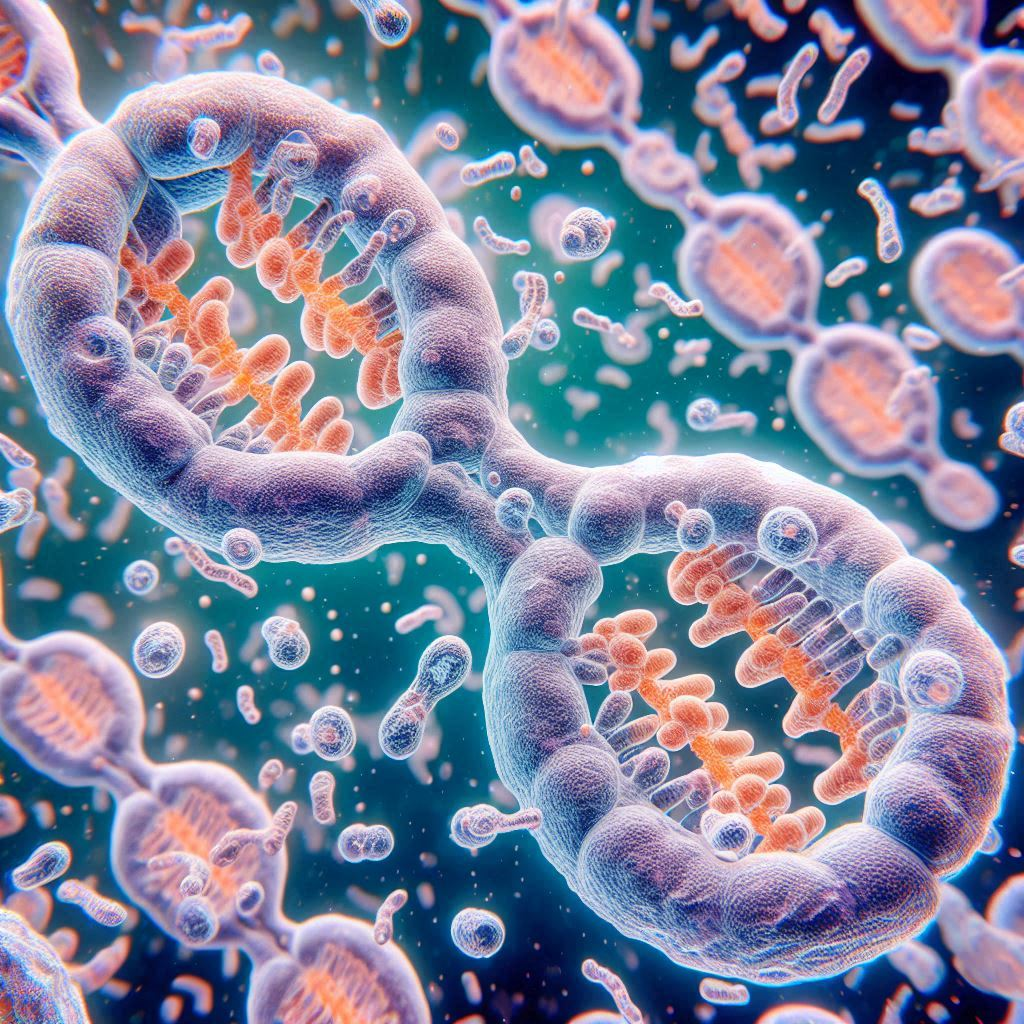What is polyembryony?

Polyembryony refers to a phenomenon where a single fertilized egg develops into multiple embryos. Unlike typical embryo formation, which involves the development of a single embryo per fertilization event, polyembryony results in the production of genetically identical or nearly identical embryos from a single zygote.
This process occurs in various organisms across different taxa, including plants, animals, and even humans, albeit in rare cases.
Types
Polyembryony can be categorized into two main types based on how multiple embryos are formed:
1. Simple Polyembryony:
- Vegetative or Adventitious : In this type, multiple embryos develop from cells within the seed or fruit without fertilization. Each embryo develops independently, resulting in genetically identical offspring (clones). This is common in some citrus fruits and pine trees.
2. Complex Polyembryony:
- Embryonic : Multiple embryos develop from a single zygote (fertilized egg). This can happen naturally or artificially. Each embryo within the polyembryonic mass can develop into a genetically identical individual. This type is seen in certain parasitic wasps and some armadillos.
Causes
1. Genetic Mutations or Variations:

- Mutations or variations in genes involved in embryo development or in the regulation of embryonic development can lead to polyembryony. These genetic changes can disrupt normal processes of embryo formation and result in the production of multiple embryos from a single zygote.
2. Irregularities in Fertilization:
- In some cases, irregularities during the fertilization process can lead to polyembryony. This might include the fertilization of more than one egg cell by multiple pollen grains or the fusion of multiple sperm nuclei with the egg nucleus, leading to the formation of multiple zygotes.
3. Cellular and Developmental Factors:
- Abnormalities or irregularities in cell division and embryo development can contribute to polyembryony. For instance, if there are errors in the division of cells within the developing embryo, it can result in the formation of multiple embryos instead of a single embryo.
4. Environmental Influences:
- Environmental factors such as temperature fluctuations, light conditions, nutrient availability, and stress (biotic or abiotic) can influence embryo development and potentially trigger polyembryony. Stressful conditions may disrupt normal developmental processes, leading to the formation of additional embryos as a survival strategy.
5. Evolutionary Adaptations:
- Polyembryony can also be an adaptive trait that has evolved in certain organisms as a reproductive strategy to increase reproductive efficiency, enhance offspring survival rates, or ensure genetic diversity or uniformity in specific environments.
6. Endosymbiotic Relationships:
- In some cases, polyembryony can be related to endosymbiotic relationships, where embryos develop from cells that are incorporated into a host organism during its development. This is observed in some parasitic organisms where multiple embryos develop from a single egg laid inside a host.
Mechanism
The mechanism varies depending on the type:
1. Simple Polyembryony (Vegetative or Adventitious):
- Nucellar Embryony: In some plants, such as citrus fruits (like oranges and lemons), multiple embryos can develop from cells within the seed coat (nucellus) rather than from the fertilized egg (zygote). These embryos are genetically identical to each other and to the parent plant because they arise from somatic cells rather than sexual reproduction.
- Integumental Embryony: This occurs when embryos develop from cells of the seed coat (integument) surrounding the fertilized egg. Each embryo develops independently, resulting in multiple offspring that are clones of each other and the parent plant.

2. Complex Polyembryony (Embryonic Polyembryony):
- Embryonic Fission: This type of polyembryony occurs when a single zygote (fertilized egg) undergoes division to form multiple embryos. Each resulting embryo can develop into a genetically identical individual. This phenomenon is observed in some parasitic wasps (such as Hymenoptera) and certain species of armadillos.
Functions
It serves several functions in different organisms, contributing to their reproductive strategies and ecological success:
1. Increased Reproductive Efficiency: Polyembryony allows organisms to produce multiple offspring from a single reproductive event. This can enhance reproductive success by increasing the number of offspring without the need for additional mating or fertilization events.
2. Genetic Uniformity: In species where polyembryony results in genetically identical offspring (clones), it ensures uniformity within the population. This can be advantageous in stable or predictable environments where offspring may benefit from having identical traits and adaptations.
3. Risk Spreading: Polyembryony can spread reproductive risk. Even if some embryos or offspring are lost due to environmental factors or predation, the survival of genetically identical siblings ensures that at least some individuals survive to adulthood.
4. Parasitism Adaptation: In parasitic species such as certain wasps, polyembryony allows for the production of multiple offspring within a host. This increases the chances that at least one offspring will successfully develop and emerge, enhancing the reproductive success of the parasitic species.

5. Seed Dispersal and Germination: In plants, particularly those with adventitious polyembryony (like citrus fruits), multiple embryos can germinate from a single seed. This can aid in seed dispersal and increase the chances of successful establishment of seedlings in diverse environments.
6. Evolutionary Persistence: Polyembryony can be an evolutionary strategy that enhances species persistence and adaptation. By producing genetically identical offspring or multiple offspring from a single reproductive event, organisms can increase their resilience to environmental changes and disturbances.
In vertebrates
Polyembryony, specifically in vertebrates, is a rare phenomenon but has been observed in certain species of armadillos. Here are some details about polyembryony in vertebrates:
1. Armadillos: The nine-banded armadillo (Dasypus novemcinctus) is notable for exhibiting polyembryony. In this species, a single fertilized egg can split into multiple embryos, resulting in genetically identical offspring. This type of polyembryony is termed “embryonic fission.”
2. Mechanism: After fertilization, the embryo undergoes cleavage, similar to identical twins in humans. However, in armadillos, the embryos do not completely separate from each other but instead remain connected within the same uterine environment. Eventually, each developing embryo forms its own individual, resulting in a litter of genetically identical young.
3. Reproductive Advantage: Polyembryony in armadillos likely provides reproductive advantages such as increasing the number of offspring produced from a single pregnancy and potentially enhancing survival rates in harsh or unpredictable environments.
4. Ecological Significance: This phenomenon is rare among vertebrates and represents an adaptation specific to armadillos. It underscores their evolutionary adaptations to their habitats and reproductive strategies.
In invertebrates
Polyembryony is more commonly observed in invertebrates compared to vertebrates. Here are some examples and details in various groups of invertebrates:
1. Parasitic Wasps (Hymenoptera):

- Polyembryony is well-documented in parasitic wasps, such as species within the families Braconidae and Chalcididae. In these insects, a single egg is typically laid inside a host insect (often a caterpillar or beetle larva). After the egg hatches, the developing embryo undergoes multiple rounds of division, resulting in the formation of numerous embryos, each of which develops into a larva. These larvae feed on the host, eventually emerging as adult wasps. The resulting larvae are genetically identical clones of each other.
2. Parasitic Flies (Diptera):
- Some species of parasitic flies, such as those in the family Tachinidae, also exhibit polyembryony. Similar to parasitic wasps, a single egg can divide into multiple embryos within the host insect. This adaptation increases the chances of survival and successful reproduction for the parasitic fly.
3. Rotifers:
- Certain species of rotifers, microscopic aquatic invertebrates, display polyembryony. In these organisms, a fertilized egg can develop into a cluster of genetically identical embryos. This strategy enhances reproductive output and can be advantageous in unstable or unpredictable environments.
4. Nematodes:
- Polyembryony has been observed in some species of nematodes (roundworms). In these organisms, a single egg can give rise to multiple embryos, each of which develops independently. This phenomenon contributes to rapid population growth and survival in favorable conditions.
5. Other Invertebrates:
- Polyembryony has been reported in various other groups of invertebrates, including certain mollusks, crustaceans, and even some insects beyond parasitic species. Each instance reflects adaptations to specific ecological niches and reproductive strategies aimed at increasing reproductive success and population persistence.
Polyembryony in plants
Polyembryony in plants is observed in several species across different families. Here are a few examples of plants that exhibit polyembryony:
1. Citrus spp. (Rutaceae family):
- Citrus fruits such as oranges (Citrus sinensis), lemons (Citrus limon), and grapefruits (Citrus paradisi) are well-known for nucellar polyembryony. In these plants, embryos develop from cells of the nucellus, which is the tissue surrounding the embryo sac. Each embryo is genetically identical to the parent plant and to each other.
2. Mango (Mangifera indica, Anacardiaceae family):

- Mango trees commonly exhibit polyembryony. Multiple embryos can develop from cells within the seed coat (integumental polyembryony). This trait is significant in mango propagation and has implications for maintaining genetic uniformity in cultivated varieties.
3. Pine (Pinus spp., Pinaceae family):
- Some species of pine trees, such as the Monterey pine (Pinus radiata), exhibit polyembryony. Multiple embryos can develop from cells of the nucellus. This trait is important in forestry and can influence seedling production and genetic diversity in pine populations.
4. Cocoa (Theobroma cacao, Malvaceae family):
- Cocoa trees can display polyembryony, where multiple embryos develop from a single fertilized egg cell (zygotic polyembryony). This phenomenon is significant in cocoa propagation and cultivation practices.
5. Date palm (Phoenix dactylifera, Arecaceae family):
- Date palms exhibit polyembryony, where multiple embryos can develop within a single seed. This trait is important in date palm cultivation and contributes to the propagation of true-to-type varieties.
Some common examples
1. Citrus Fruits (Citrus spp.)
2. Armadillos (Dasypus novemcinctus)
3. Parasitic Wasps (Hymenoptera)
4. Rotifers
5. Pine Trees (Pinus spp.)
6. Cacao (Theobroma cacao)
Applications
Polyembryony has several applications and implications across various fields, including agriculture, horticulture, conservation, and biotechnology. Here are some notable applications of polyembryony:
1. Agriculture and Horticulture:

- Improved Crop Production: In agriculture, polyembryony can be utilized to propagate plants more efficiently. For example, in citrus cultivation, nucellar polyembryony ensures that plants derived from seeds are genetically identical to the parent tree, maintaining desirable traits such as fruit quality and disease resistance.
- Seedling Production: Polyembryony allows for the production of multiple genetically identical seedlings from a single seed. This is advantageous in forestry and fruit tree cultivation, where uniformity in growth and productivity is desired.
2. Conservation and Restoration:
- Genetic Conservation: Polyembryony can aid in the conservation of rare and endangered plant species by enabling the production of numerous genetically identical individuals from limited seed resources. This can enhance genetic diversity preservation efforts.
- Ecological Restoration: In restoration ecology, polyembryo can facilitate the rapid establishment of plant populations in degraded or disturbed habitats, contributing to ecosystem restoration efforts.
3. Biotechnology and Research:
- Propagation Techniques: Polyembryo serves as a valuable tool in plant tissue culture and propagation techniques. It allows researchers and breeders to rapidly multiply desirable plant varieties without relying on traditional seed propagation.
- Studying Developmental Biology: Polyembryo provides insights into the mechanisms of embryo development and cellular differentiation. Studying polyembryo systems can advance our understanding of plant developmental biology and genetics.
4. Biocontrol and Pest Management:
- Biological Control Agents: Insect species exhibiting polyembryony, such as parasitic wasps, are used as biological control agents in agriculture. These insects parasitize pest species by laying eggs inside them, and polyembryo enhances their effectiveness by producing multiple parasitoid larvae from a single egg.
5. Education and Outreach:
- Science Education: Polyembryo serves as an intriguing example of reproductive strategies and adaptations in biology. It is often studied in educational settings to illustrate concepts of genetics, evolution, and ecological interactions.
Challenges
1. Genetic Uniformity:
- While genetic uniformity can be advantageous in terms of maintaining desirable traits, it can also pose risks. Lack of genetic diversity makes populations more vulnerable to diseases, pests, and environmental changes that may impact entire crops or plantations.
2. Management of Offspring:
- In some cases, managing a large number of genetically identical offspring can be challenging. This is particularly relevant in forestry and agriculture, where uniformity may simplify management practices but could also lead to increased susceptibility to specific threats.
3. Environmental Factors:

- Environmental conditions can influence the expression of polyembryo. Stressful environments or fluctuations in temperature and moisture levels may affect the formation and development of embryos, potentially leading to inconsistent outcomes in propagation efforts.
4. Risk of Invasive Spread:
- In some situations, the high reproductive efficiency associated with polyembryony can pose risks of invasive spread. Introducing genetically identical plants into new environments may facilitate rapid colonization and outcompete native species, disrupting local ecosystems.
5. Research and Development:
- Despite its potential benefits, polyembryo requires specialized knowledge and techniques for successful application. Research into the genetic mechanisms underlying polyembryo and its practical implications is ongoing, with continued efforts needed to optimize its use in different contexts.
6. Ethical and Social Considerations:
- The widespread adoption of polyembryo in agriculture and forestry raises ethical questions about biodiversity conservation, sustainable practices, and the equitable distribution of resources. Balancing economic benefits with environmental and social responsibilities is essential.
7. Regulatory Frameworks:
- In some regions, the use of genetically modified organisms (GMOs), which could potentially include plants propagated through biotechnological methods like polyembryo, is subject to stringent regulatory frameworks. Compliance with these regulations adds complexity to the adoption and commercialization of polyembryo-based technologies.

FAQ (frequently asked questions)
1. What is polyembryony?
- Polyembryo is a biological phenomenon where multiple embryos develop from a single fertilized egg or from the cells of an embryo. It can occur in various organisms, including plants, invertebrates, and occasionally in vertebrates.
2. What are the types of polyembryony?
- Polyembryo can be classified into different types based on the origin and mechanism of embryo development:
- Nucellar : Embryos develop from cells of the nucellus in plants, such as citrus fruits.
- Integumental : Embryos develop from cells of the seed coat (integument) in plants.
- Zygotic : Multiple embryos develop from a single fertilized egg (zygote).
- Embryonic : Multiple embryos develop from cells within the embryo itself, as seen in some invertebrates.
3. Which organisms exhibit polyembryony?
- Polyembryo is observed in various organisms:
- Plants: Citrus fruits, mangoes, pines, and cocoa.
- Invertebrates: Parasitic wasps (Hymenoptera), rotifers, and certain nematodes.
- Vertebrates: Some species of armadillos.
4. What are the benefits of polyembryony?
- Polyembryo enhances reproductive efficiency by producing multiple offspring from a single reproductive event. It ensures genetic uniformity, facilitates rapid population growth, and can provide adaptive advantages in stable or changing environments.
5. Are there challenges associated with polyembryony?
- Yes, challenges include managing genetic uniformity, environmental influences on embryo development, regulatory considerations, and potential impacts on biodiversity and ecosystem dynamics.
6. How is polyembryony used in agriculture and horticulture?
- In agriculture, polyembryo is used to propagate plants with desirable traits efficiently. It ensures uniformity in orchards and forestry, aids in rapid seedling production, and contributes to the conservation of genetic resources.
7. What are the implications of polyembryony for biodiversity and conservation?
- Polyembryo can influence genetic diversity within populations. While it can aid in the conservation of rare and endangered species by producing genetically identical individuals, it may also pose risks to biodiversity if introduced species dominate native ecosystems.
8. Is polyembryony used in biotechnology or research?
- Yes, polyembryo serves as a model for studying developmental biology, genetics, and ecological interactions. It is also explored for its potential applications in biotechnological advancements and sustainable agricultural practices.
Conclusion
Polyembryo stands as a testament to the ingenuity of evolutionary processes, showcasing nature’s ability to adapt and thrive in diverse environments. From its biological mechanisms to its practical applications in agriculture and ecology, polyembryony continues to inspire scientific inquiry and technological innovation. As researchers delve deeper into its mysteries, the potential for discovering new insights into genetics, development, and adaptation remains vast.
Table of Contents
Read more about Polyembryony
Go and visit dusearchit.in and get more knowledge about others topics.
